This is part III of the Exploring Angkor series of posts on Angkor Archaeological Park.
Exploring Angkor
Part I: Angkor Wat
Part II: Eastern Angkor
Part III: Angkor Thom
Part IV: East Baray and Banteay Srei

After exploring the temples in Eastern Angkor, we crossed the Victory Gate (east entrance) into the ancient city of Angkor Thom. While Angkor Wat was one large temple, Angkor Thom was a gated city containing several large temples within its walls. We visited Bayon (the most famous), Baphuon, Phimeanakas, as well as the Leper King and Elephant terraces.
Victory Gate
This east entrance gate into Angkor Thom – known as the Victory Gate – was impressive. A long bridge allowed for crossing of the moat around the ancient city. Both sides had balustrades showing the eternal tug of war, where gods (on the left side of the bridge) and demons (on the right side of the bridge) pulled on a seven-headed naga. This was part of Angkor Wat’s gallery masterpiece, the Churning of the Sea Milk.

The naga bridges also symbolised the connection of the land of men (outside) to the land of gods (inside). The top of the gate featured a four-headed face, pointing to each cardinal point, a prelude to Bayon. The Victory Gate was a short but worthwhile stop.
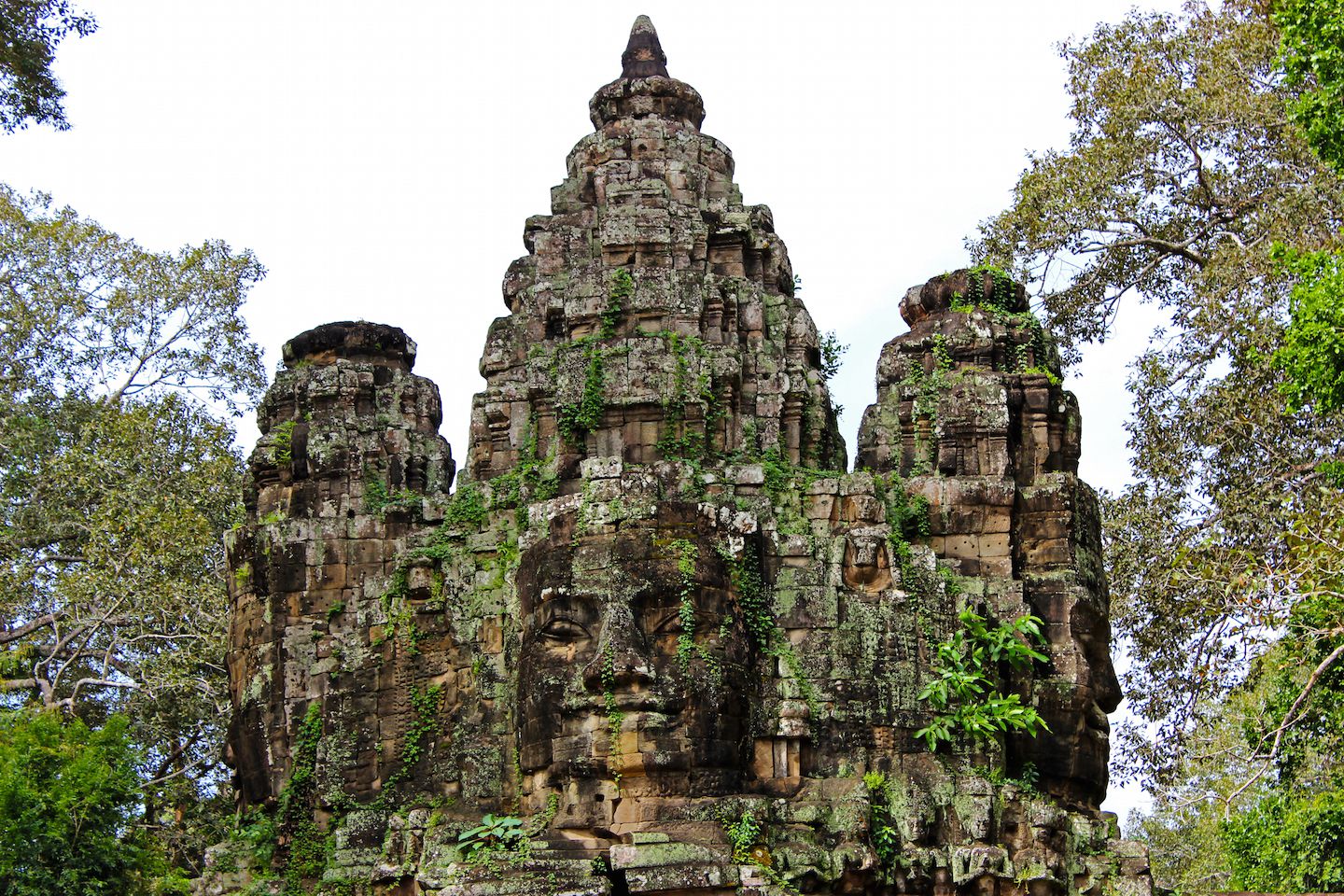
Bayon
Our first reaction when seeing Bayon was WOW! It looked phenomenal, different than anything we have ever seen and will probably ever see. A majestic temple with 37 standing towers, each had four faces pointing in the cardinal directions. The arrangement of the towers was complex enough to be a maze, while the towers became higher and higher closer to the center of the temple, culminating in the tallest tower.
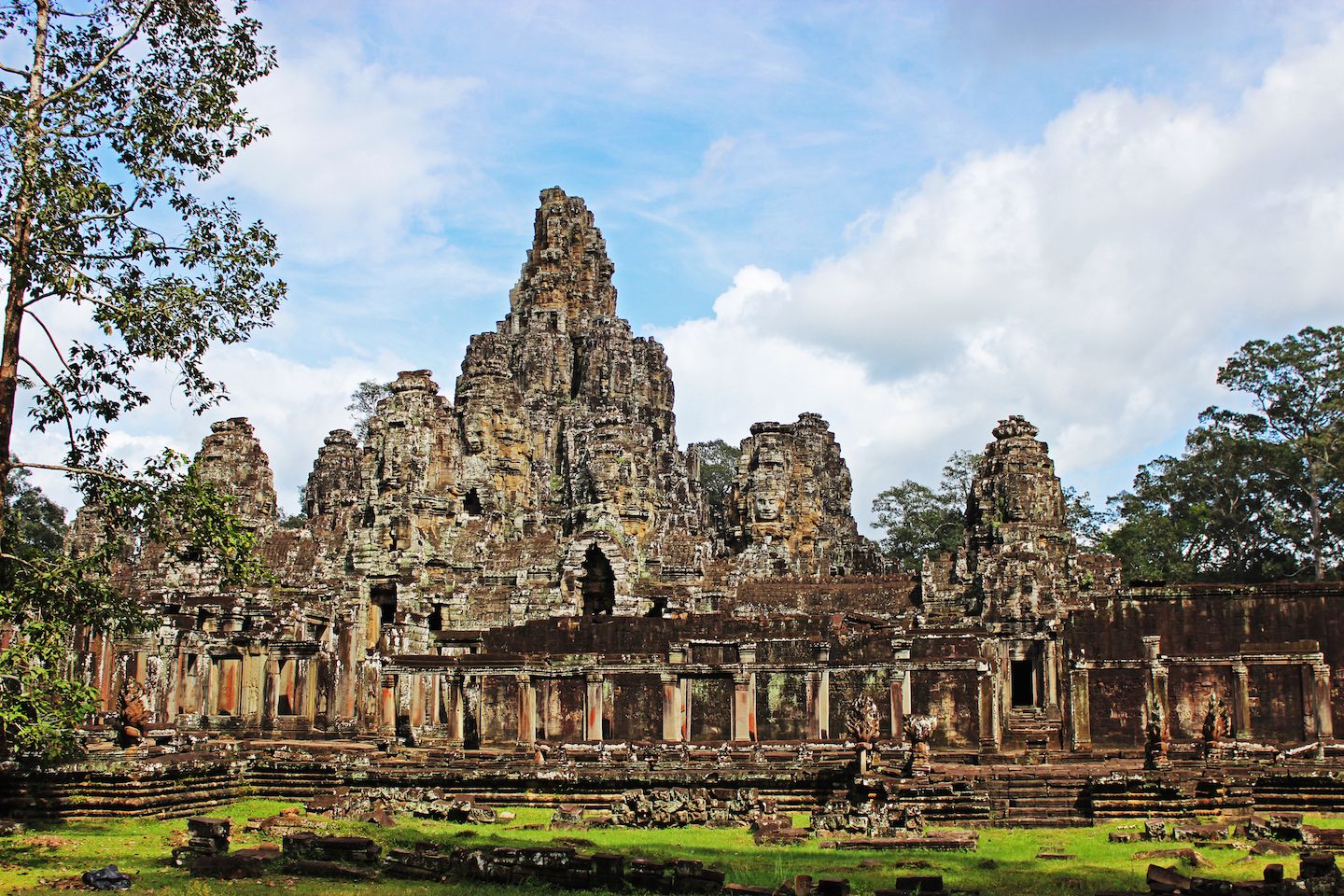
The whole temple was very powerful and enigmatic. Bayon passed through several reconstructions because it was so well fortified that kings would rather reconstruct parts of it, than remove it and build a new temple. It also lasted through several religious periods, from the Pantheon of the Gods, to Hinduism to Buddhism.
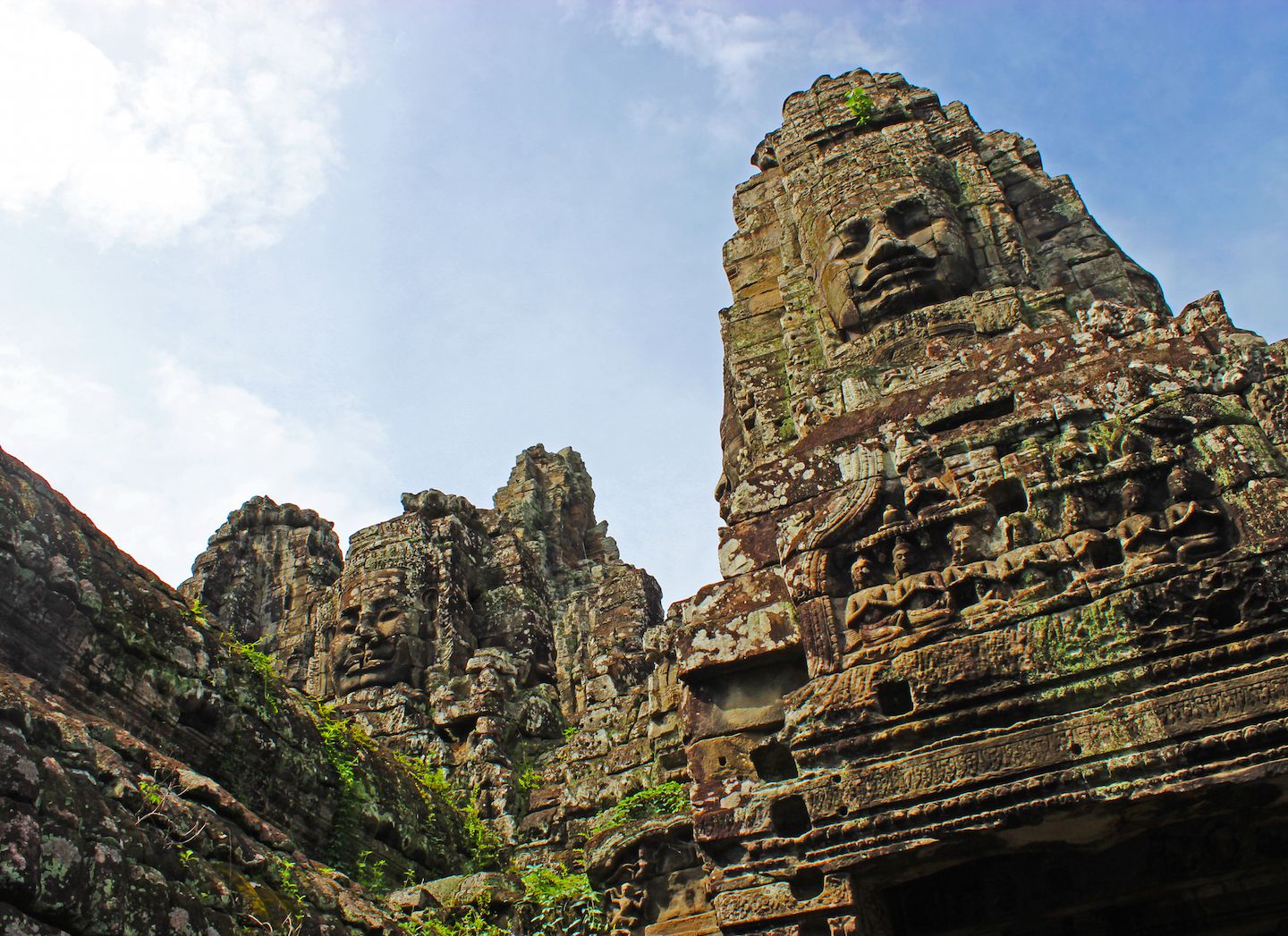
We started our visit by exploring the outer and inner galleries, where bas-relief told the stories of Khmer people’s daily lives. From weighing the meat at local markets to cooking and hunting, it was interesting to see rituals in the life of the people back in the day. Bas-relief galleries presented depth in the entire picture by using levels on the wall. Taller drawings were meant to be further away.

Another notable gallery was the one depicting the war against the Chams. The carvings showed in detail the vestments used for war, as well as the weapons used by both the Khmer and the Chams. After marveling at the galleries, we climbed the stairs to finish our visit on the second level, where we saw many of the face towers up-close. It was amazing.

It’s hard to describe how magnificent the face towers were. From far away they looked small, but once we were right beside them, we saw that they were huge! Walking around the upper level surrounded by faces in every corner and direction, right beside us as well as further away, was like walking amongst the ancient gods. They were beautiful and powerful, yet so simple and smiling. We couldn’t believe that we were surrounded by the iconic faces of Bayon, which was one of our most anticipated temples.

Baphuon
We left Bayon and walked towards the long elevated causeway that leads to Baphuon. Resembling Ta Keo, Baphuon was also a massive temple-mountain. It had five tiers that rose 24m above the ground. Lots of very steep stairs on each side allowed us to ascend.

We arrived here at around 11am and by this time the sun was strong, making us hot and sticky. Climbing the steep stairs under the sun was miserable, but worth the effort, with a panoramic view of the east entrance of the temple and the elevated causeway.

The very top of the Baphuon had just a few columns left and no chambers like most of the other temples.

Next to the west entrance was an unfinished reclining Buddha statue. Had we not read about it, we honestly would have thought it was just another regular wall.

Phimeanakas
Phimeanakas again resembles Ta Keo like Baphuon – a single massive pyramid-like block with no corridors or chambers on the ground level. Stairs on all four sides led to the top. Phimeanakas was probably smaller than the other two. We didn’t actually climb the stairs here as it was burning hot under the sun and the temple was quite similar to others we’ve seen.

We did, however, enjoy some time sitting on some rocks besides the temple in the shade, admiring the view.
Elephant Terrace / Leper King Terrace
The Elephant and Leper King Terraces were enormous terraces at the heart of Angkor Thom. They were essentially very tall and wide elevated walkways. We walked through both of them, but the best views were actually from the road when we drove by on tuk-tuk since all the beautiful bas-relief were on the sides, facing the road. There was not much to see from the top of the terrace, except other temples in the distance.
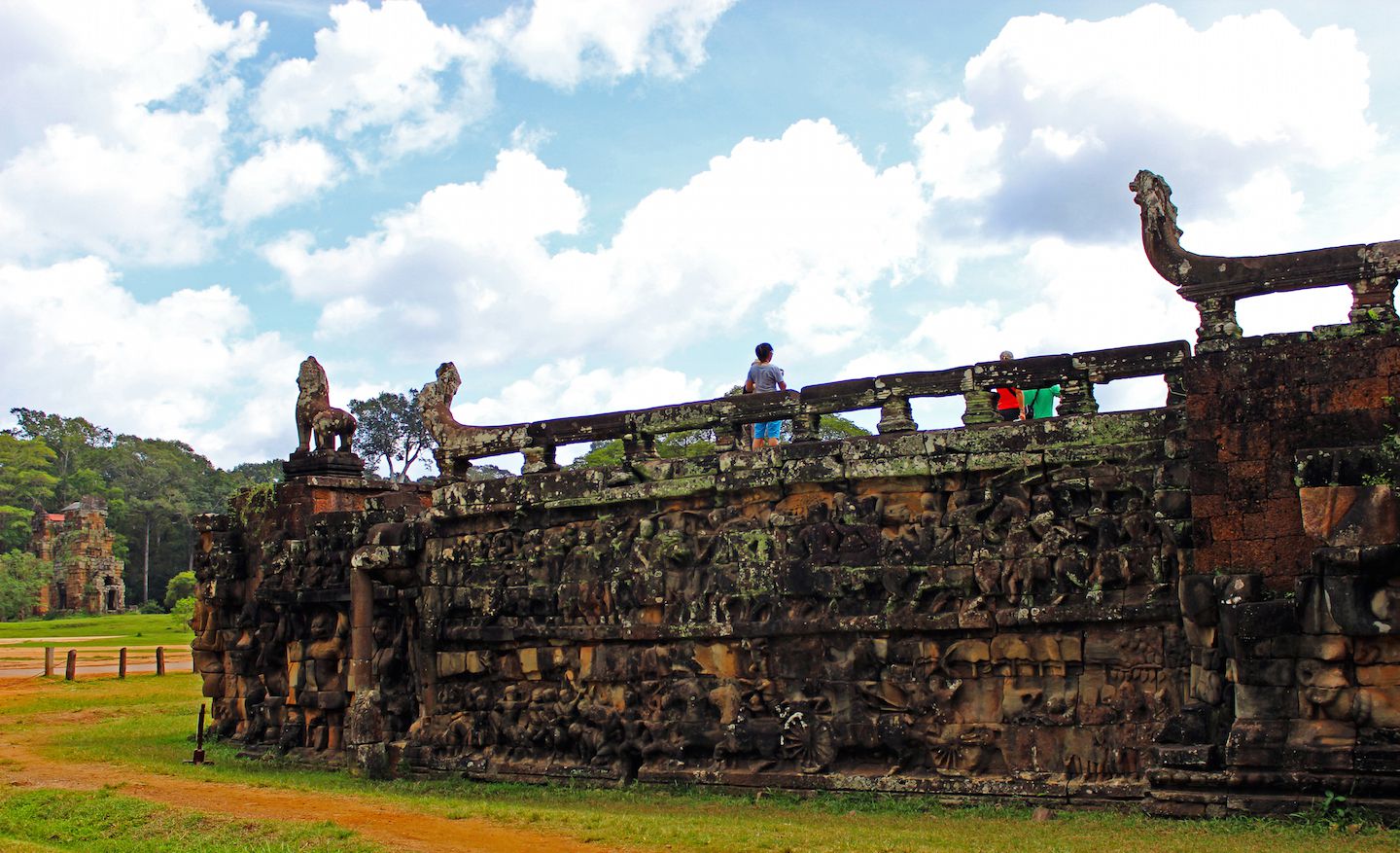
The Elephant Terrace was named for its elephant bas-relief. Another noteworthy figure was the three-headed elephant Airavata, the mount of the god Indra, pulling lotus flowers with their trunks. The terrace also made use of naga balustrades, as well as garuda and guardian lion images.
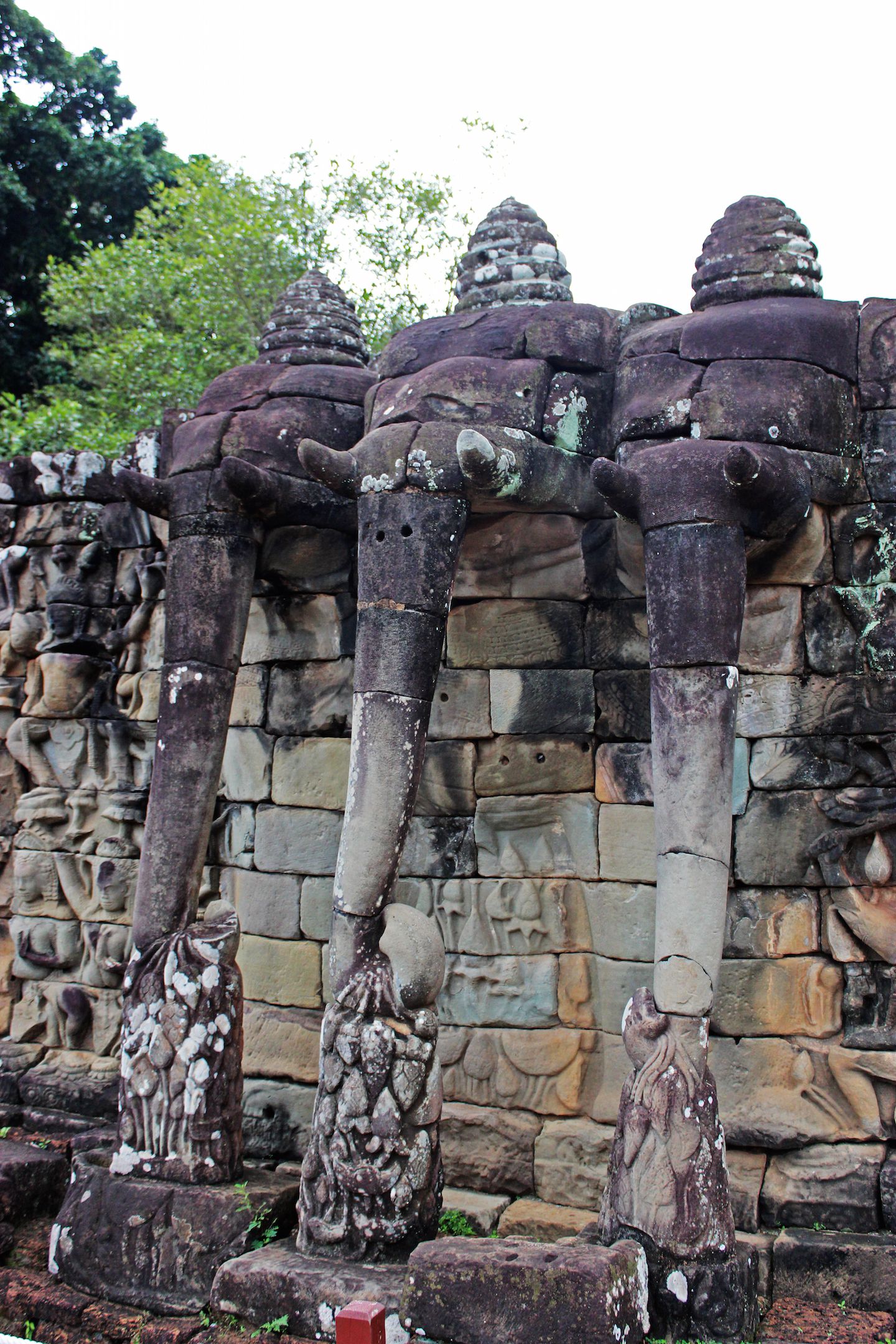
The bas-relief at the Leper King Terrace were more impressive. They were deeper than usual and more detailed, telling the story of the supposed king of Angkor who was a leper. Part of our walk through the Leper King Terrace was on the ground, right beside the bas-relief walls of the terrace, where we saw the carving up-close. It was here that we saw our first nine-headed naga, which are extra special.
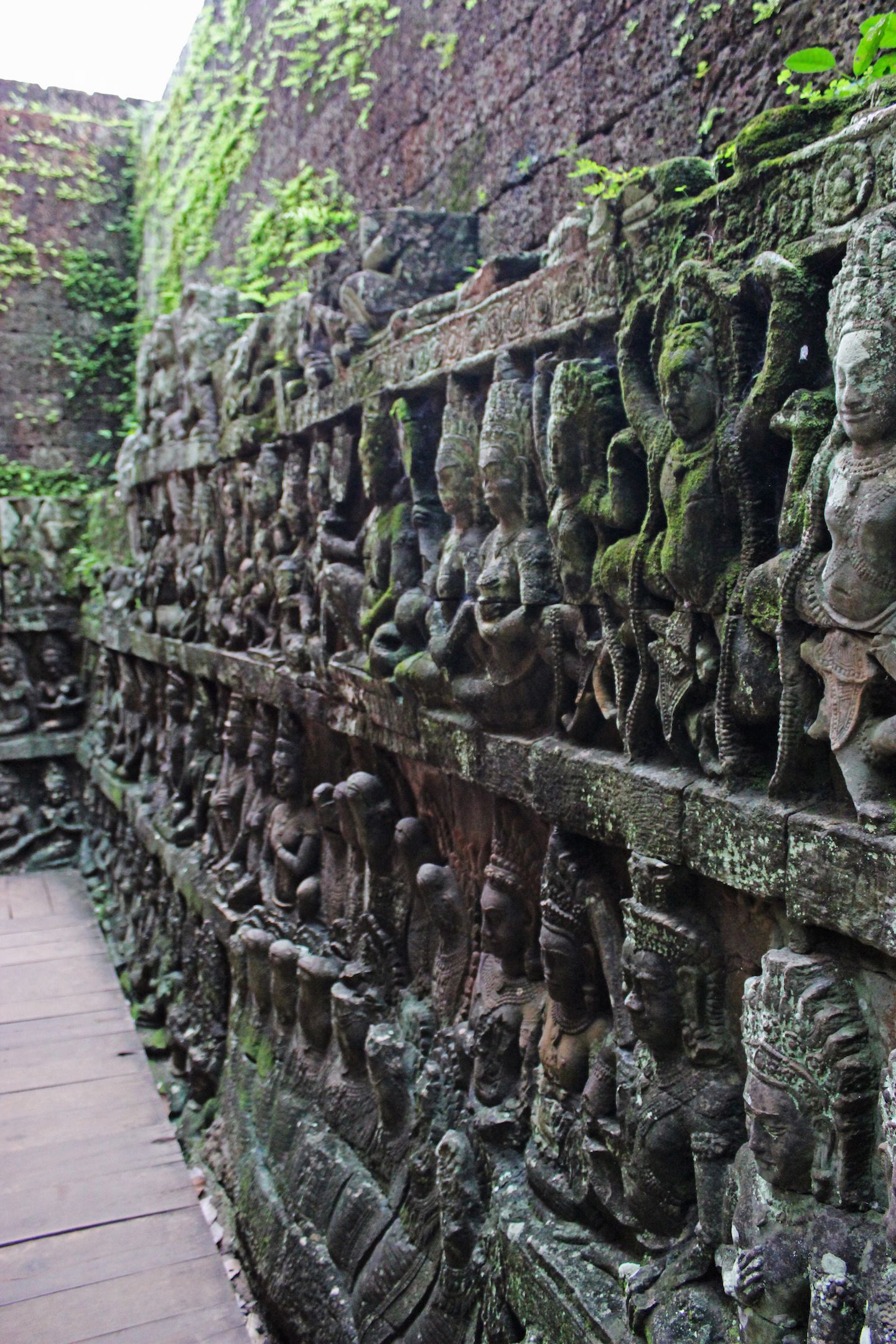
The large gated city of Angkor Thom was finally finished. The highlight by far was Bayon with its iconic faces. Terraces were also something distinct in Angkor Thom. On the last day of our park pass, we explored the temples in the East Baray area as well as Banteay Srei.
For more pictures from Angkor Thom, please visit the gallery!

